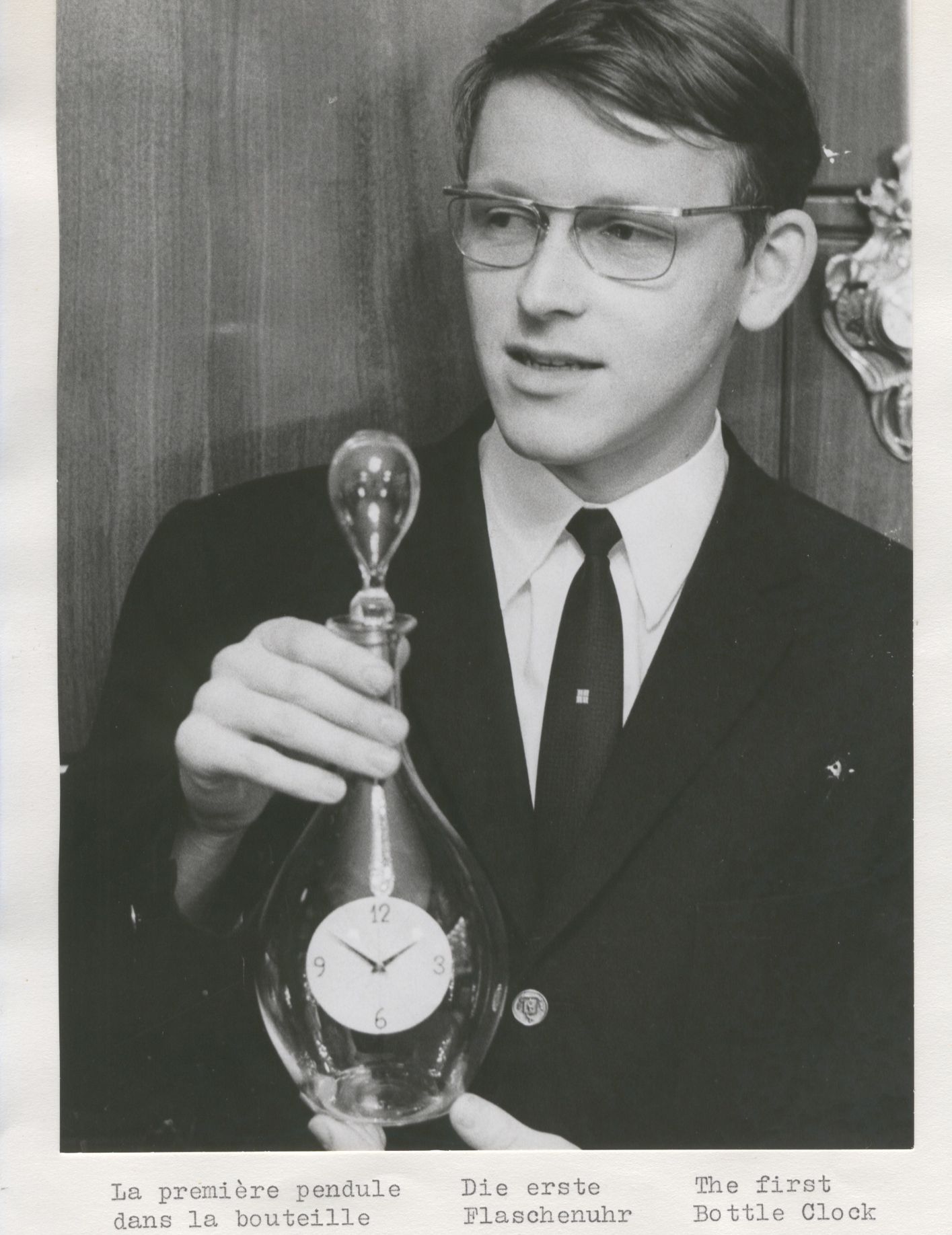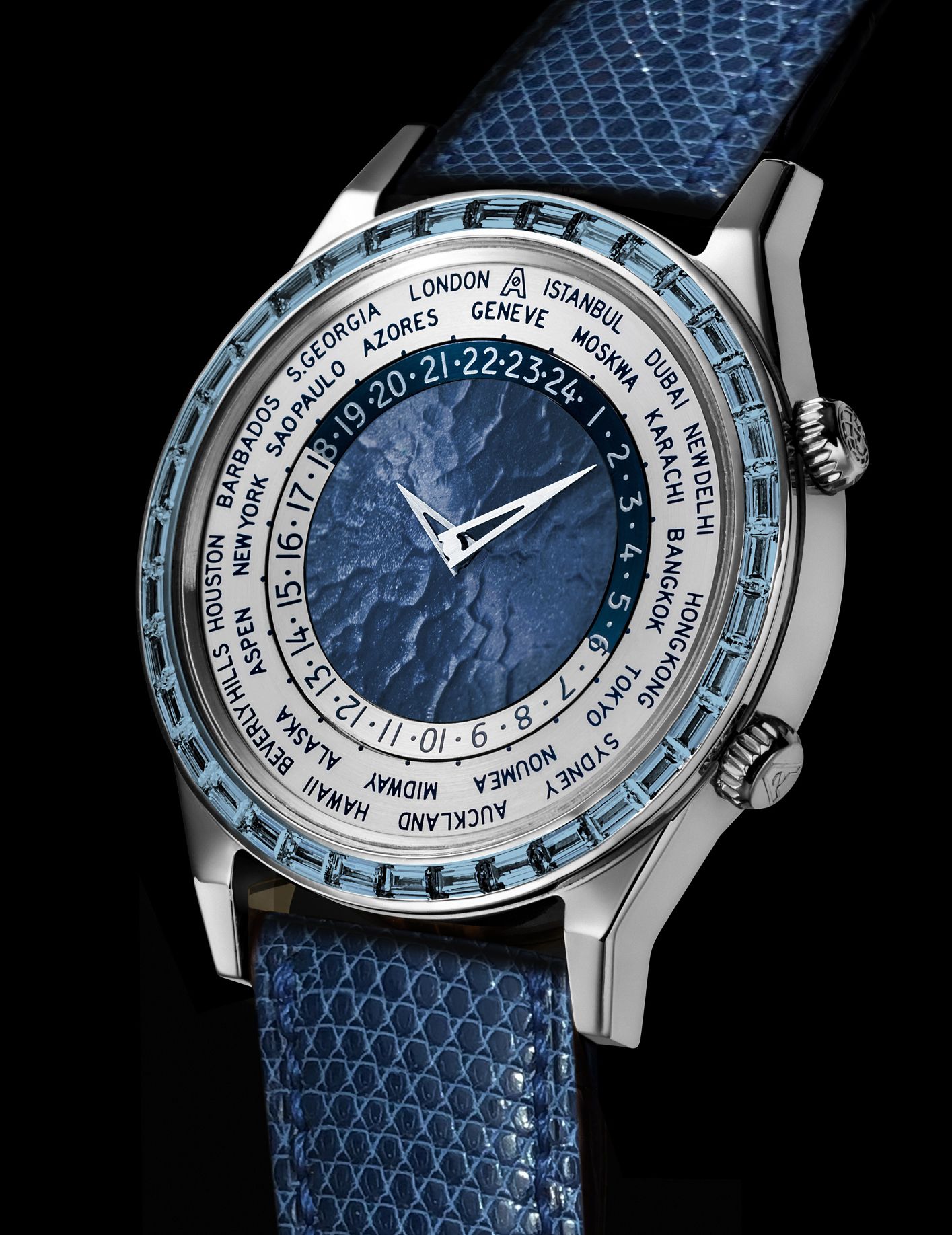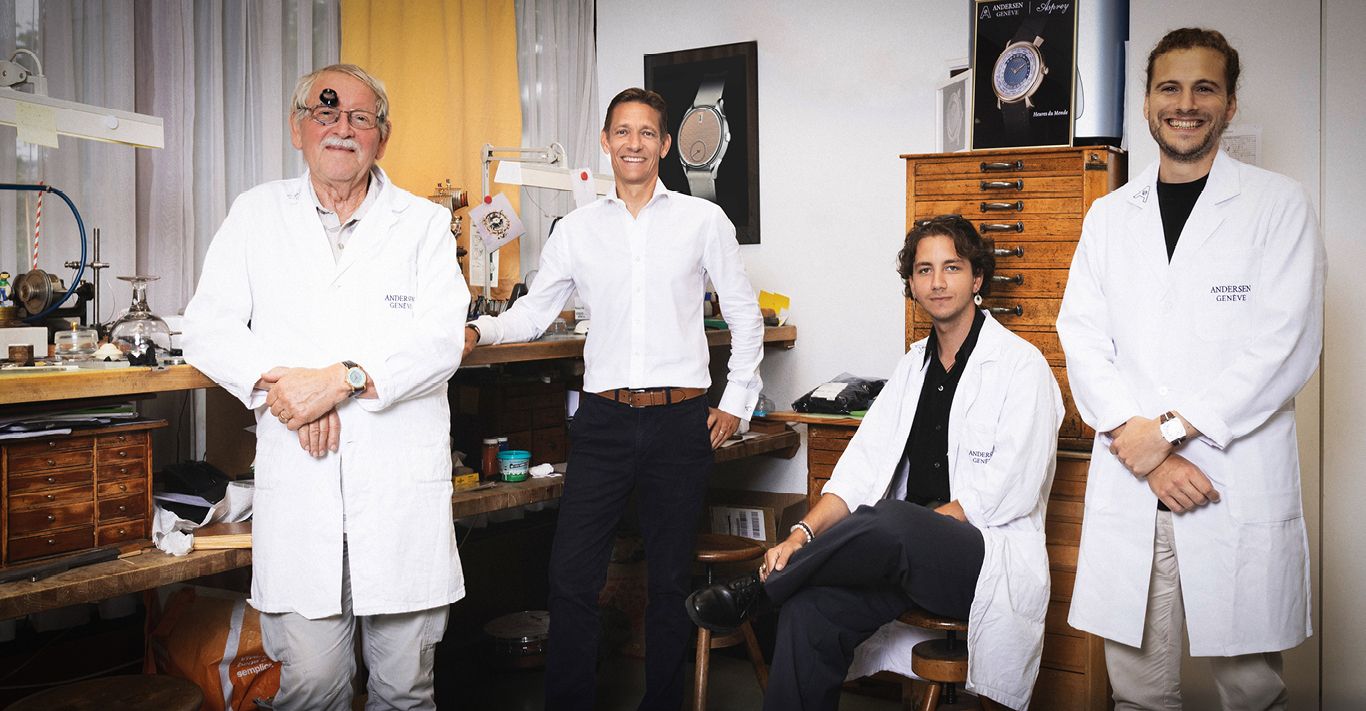WORDS
Simon de Burton
Readers of a certain age might recall the famous television commercials for Remington electric razors which featured the firm’s owner, Victor Kiam, holding one of his razors and declaring: ‘I liked it so much, I bought the company.’
Pierre-Alexandre Aeschlimann had a similar feeling eight years ago when, while working in watch industry mergers and acquisitions, he was asked to find someone to take over the Svend Andersen dial name – but he liked it so much, he decided to buy it himself.
Andersen is something of a horological legend, having worked as a high-complications watchmaker for Patek Philippe before striking out on his own in 1979 and quickly creating an improved version of the World Time mechanism developed by Louis Cottier in the 1930s.
The movement for that original Communicator watch is still used today in the various Tempus Terrae traveller’s models made by the company which, since Aeschlimann’s acquisition, has been known as Andersen Genève.

But 81-year-old Andersen is still very much involved, regularly turning up for work at the atelier in Geneva where he is passing along his 60 years of experience to three young watchmakers eager to absorb his knowledge. And recently the operation has been joined by another industry veteran, Marco Poluzzi (also 81), who is training two other young Andersen watchmakers in the art of hand-making cases following the firm’s acquisition of Poluzzi’s long-established business.
By now you might have totted-up the numbers and realised that Andersen Genève runs with a lean team of just eight people, including Aeschlimann. And that, he believes, is a good number for a niche brand that makes watches for collectors as a labour of love rather than as a commercial enterprise targeting growth.
‘I would say being small is a great advantage in today’s market, especially since we don’t make watches for retailers, we make them for collectors,’ he reasons. ‘That means we can bespoke almost anything a collector wants – and the level of craftsmanship we require doesn’t really fit well with the idea of scaling up.’
That exceptional craftsmanship and level of detail has kept the number of Andersen watches historically low. Indeed, since the original Svend Andersen dial name was established 43 years ago, a mere 1,300 watches have been produced – 500 of which were accounted for by a special edition created in 1992 to commemorate the 500th anniversary of the discovery of the New World by Columbus. Other editions have included the 30-piece Mundus of 1993 (the world’s thinnest world timer) and the 1884 World Time, which was made in 120 examples in 2004 to mark 120 years since worldwide standard time was introduced.

But while the Andersen Genève name is becoming more recognised by collectors around the world, Aeschlimann insists that it will never produce regular – some might say “mundane” – time-only watches. ‘Our team of watchmakers is specifically driven to continue Svend’s tradition of only making and developing complications, which is why we don’t, and won’t, make any conventional three-hand models.’
The current line-up majors on two types of movement. The first is the “jump hours” mechanism, in which the hour is displayed by a digital disc passing behind an aperture at 12 o’clock, with minutes shown on the subdial at six o’clock – leaving space to admire the beautifully decorated dial plate. The movement behind is based on a Frédéric Piguet ebauche which Andersen Genève adapts and decorates to its own design.
The World Time watches, meanwhile, are built on base movements from a historic but now-defunct maker called A.S., which are created from raw components and, again, meticulously decorated in typical Andersen Genève style.
Other ultra-special models include the high complication perpetual calendar watch; the playful Joker automaton model, originally a collaboration with niche maker Konstantin Chaykin; and the 12-piece Vita Vinum that observes the winegrowing year via an animated dial.
One thing that all Andersen Genève watches have in common, however, is that they are rare – and that, says, Aeschlimann, is what makes them so attractive to collectors. ‘I would say that, during the past five years, I have got to know three-quarters of our collectors. We have buyers in Hong Kong, Singapore and the US, but we have also had a strong following in the UK for many years. All the same, the world of Andersen Genève is very small.’
And that, we suspect, is just how Pierre-Alexandre Aeschlimann would like it to stay…




